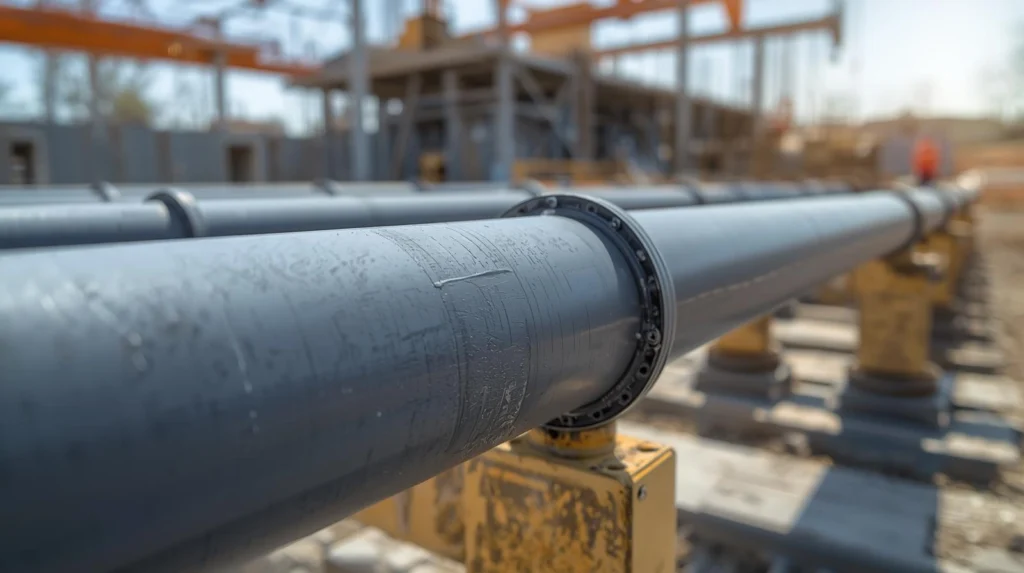Are you tired of dealing with frequent pipe replacements and water supply interruptions? If you’re involved in planning, managing, or installing underground water systems, you’ve probably faced these challenges. But what if there was a solution that combined long-term reliability, cost-efficiency, and environmental sustainability?
Enter HDPE (High-Density Polyethylene) pipes—an innovative material rapidly becoming the go-to choice for underground water supply systems. Known for their durability, flexibility, and resistance to corrosion, HDPE pipes offer a range of benefits that traditional materials like PVC or metal pipes simply can’t match. In this guide, we’ll explore why HDPE pipes should be your first choice for underground water supply systems, providing you with insights to make informed, cost-effective decisions.
By the end of this article, you’ll understand why more businesses and municipalities are opting for HDPE pipes, and how you can implement them in your own projects to achieve long-lasting results.
Why Are HDPE Pipes a Better Choice for Underground Water Systems?
When choosing the right piping system for your underground water supply, the material matters—greatly. HDPE pipes stand out for several reasons, with their superior characteristics making them ideal for underground water systems. Here’s why they should top your list:
1. Exceptional Durability
HDPE pipes are highly resistant to corrosion, abrasion, and chemicals, which makes them ideal for underground water systems. Unlike metal pipes, which are prone to rust and deterioration when exposed to moisture and chemicals in the soil, HDPE pipes maintain their structural integrity for decades.
Case Study:
A large-scale commercial development in California switched from traditional steel pipes to HDPE pipes for their underground water system. After 15 years, the HDPE system remained intact, while the metal pipes required costly repairs and replacement due to corrosion.
2. Superior Flexibility and Strength
One of the standout features of HDPE pipes is their flexibility. These pipes can bend and curve to accommodate the natural shifts and settling that occur in underground systems, without compromising their strength. This is particularly important in areas with shifting soil or where seismic activity is a concern.
3. Lower Maintenance Costs
HDPE pipes are designed to require minimal maintenance. Because they are less susceptible to issues like corrosion and wear, you won’t need to spend as much on repairs or replacements. This long-term reliability translates to lower overall project costs.
What Makes HDPE Pipes More Cost-Effective?
For any project, cost is always a significant factor. Here’s why choosing HDPE pipes for your underground water supply system is often the more cost-effective choice in the long run.
1. Lower Installation Costs
HDPE pipes are lightweight and easy to install, requiring fewer resources, labor, and time to put in place. Unlike heavy-duty materials, such as concrete or metal pipes, HDPE pipes are easier to handle and install in a shorter timeframe. This means reduced labor costs and faster project completion times.
Pro Tip:
Opt for pre-fabricated HDPE pipe sections to save even more time during installation. These are ready to be connected onsite, reducing both installation time and the potential for mistakes.
2. Longevity Equals Savings
The lifespan of HDPE pipes far exceeds that of many other piping materials. A properly installed HDPE system can last for 50+ years, meaning that over time, you won’t have to worry about costly replacements or repairs. This longevity means you get maximum value out of your initial investment.
Statistic:
According to the Plastic Pipe Institute, HDPE pipes can last between 50-100 years, significantly reducing the need for expensive replacements and repair services .
3. Energy and Water Efficiency
HDPE pipes are designed to minimize friction, which means water flows through them more efficiently than through conventional piping materials. This results in lower energy consumption for pumping water through the system, reducing your operational costs.
Are HDPE Pipes Environmentally Friendly?
If environmental impact is a concern for your business or project, you’ll be pleased to know that HDPE pipes are one of the most sustainable options available. Here’s why:
1. Recyclability
HDPE is 100% recyclable, making it an eco-friendly choice compared to materials that are not as easily recycled. Choosing HDPE for your underground water supply system helps reduce the amount of plastic waste that ends up in landfills.
2. Reduced Carbon Footprint
The manufacturing process for HDPE pipes requires less energy than the production of other types of pipes, which contributes to a lower carbon footprint. Additionally, their long lifespan means fewer resources are needed for replacements.
3. Sustainable Water Systems
HDPE pipes also play a role in sustainability by helping prevent leaks, which is a critical issue for water conservation. Their durability and seamless construction reduce the risk of leaks and water loss in the system, which is particularly crucial in drought-prone areas.
How Do HDPE Pipes Compare to Other Pipe Materials?
When comparing HDPE pipes to other common materials such as PVC, steel, and concrete, several distinct advantages make HDPE stand out.
1. HDPE vs. PVC
While both materials are durable, HDPE has a significant advantage when it comes to flexibility and resistance to chemical damage. PVC pipes, though commonly used, are more brittle, making them susceptible to cracking under stress. HDPE pipes, on the other hand, can withstand more pressure and temperature fluctuations without breaking.
Example:
A local water utility company in Arizona chose HDPE pipes over PVC for an extensive underground water system. The system’s flexibility ensured there were no fractures or leaks during the installation process, saving on future repair costs.
2. HDPE vs. Steel
Steel pipes are robust but prone to rust and corrosion over time, especially when exposed to soil moisture. While steel may have a higher initial strength, HDPE’s resistance to corrosion and long-term durability make it a better long-term investment for underground water systems.
3. HDPE vs. Concrete
Concrete pipes can be heavy and cumbersome to install, often requiring specialized equipment and more labor. HDPE pipes are lighter, more flexible, and faster to install, making them a more practical choice for many projects.
What Are the Installation Best Practices for HDPE Pipes?
To get the best results from your HDPE pipe system, following proper installation guidelines is essential. Here are some tips for ensuring a successful installation:
1. Trenching and Bedding
Proper trenching and bedding are essential for ensuring the longevity of your underground HDPE pipe system. The trench should be wide enough to allow for easy placement of the pipes, with a smooth, well-compacted bed of sand or fine gravel to protect the pipes from sharp objects and rough soil.
2. Proper Fusion Techniques
HDPE pipes are often connected using a process known as butt fusion, which involves heating the pipe ends and fusing them together. It’s crucial to use professional-grade fusion equipment and follow the manufacturer’s guidelines to ensure the connections are made correctly.
3. Testing and Inspection
After installation, perform pressure tests and visual inspections to ensure there are no leaks or weak points in the system. HDPE pipes, being highly resistant to damage, should provide reliable performance if installed correctly.
Conclusion:
Choosing HDPE pipes for your underground water supply system is a smart decision that combines cost-effectiveness, durability, and environmental benefits. Whether you’re installing a new system or upgrading an existing one, HDPE offers superior performance in comparison to traditional materials like PVC, steel, or concrete.
By opting for HDPE, you’re not just investing in a piping system—you’re making a long-term commitment to sustainability, reduced maintenance, and operational savings. Ensure that you follow proper installation best practices and choose high-quality materials to get the most out of your HDPE pipes.
Ready to make the switch to HDPE pipes? Reach out to a trusted supplier or contractor today to get started on your underground water supply project.
Frequently Asked Questions (FAQ):
How long do HDPE pipes last?
HDPE pipes typically last between 50 and 100 years, making them a highly durable option for underground water systems.
Are HDPE pipes resistant to corrosion?
Yes, HDPE pipes are highly resistant to corrosion, unlike metal pipes that can rust over time.
Can HDPE pipes be used in areas with high seismic activity?
Yes, HDPE pipes are flexible, making them ideal for areas prone to shifting soil or seismic activity.
How do HDPE pipes compare to PVC?
While both materials are durable, HDPE pipes offer superior flexibility, resistance to chemical damage, and long-term durability compared to PVC.
What is the installation process for HDPE pipes?
HDPE pipes are typically installed using a trenching method, with the pipes fused together using butt fusion for seamless connections.
Are HDPE pipes eco-friendly?
Yes, HDPE pipes are 100% recyclable and have a lower carbon footprint compared to other materials.


